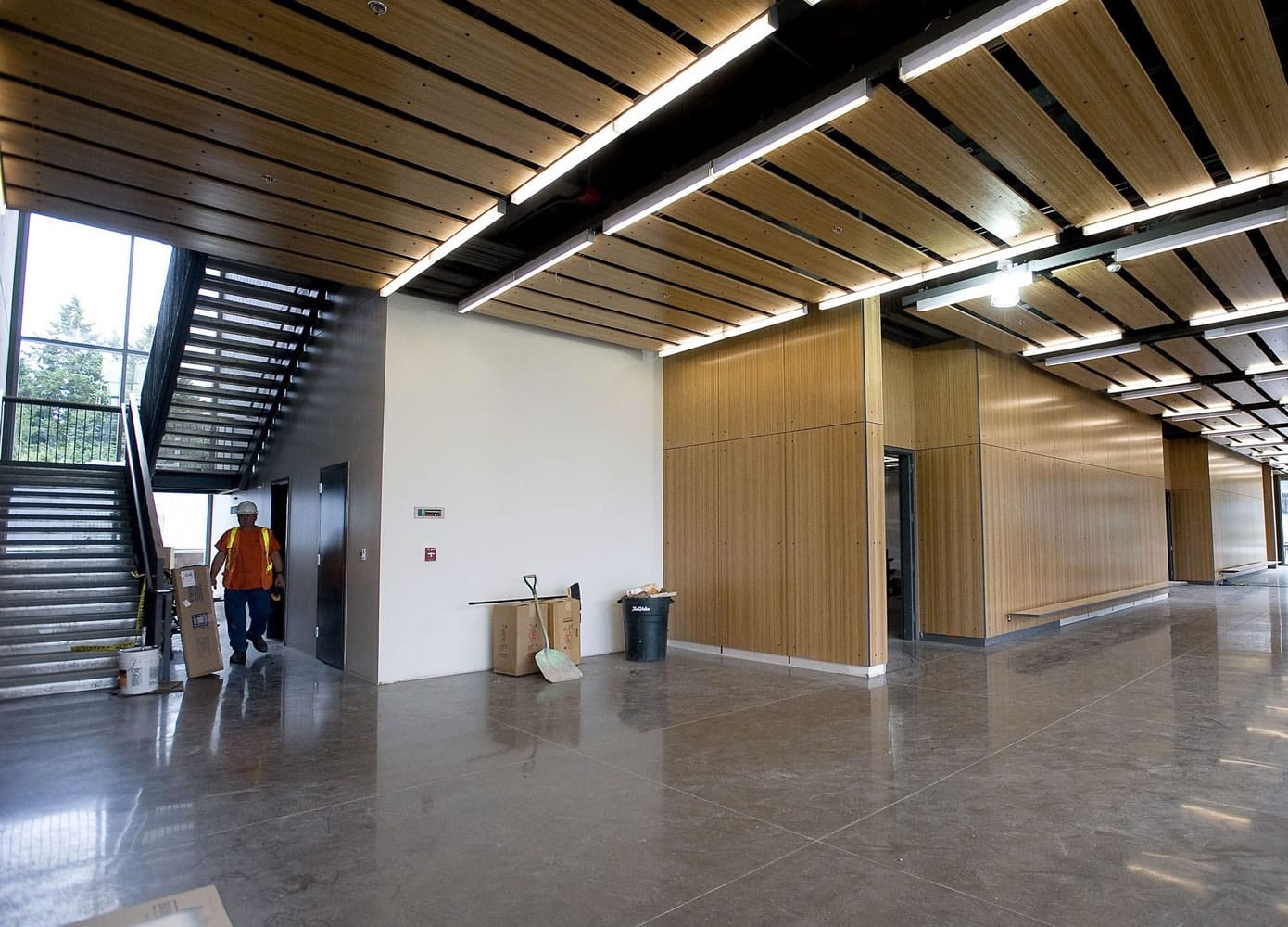In many ways, the timing for a new countywide economic development plan couldn’t be better. Clark County’s economy needs a fresh look following the Great Recession’s smackdown that left the county with the region’s highest unemployment, a decimated housing industry, and a serious case of self-doubt.
Yet the Clark County Economic Development Plan, now in final draft form, arrives at a challenging time of leadership transitions and tensions over the direction of the county’s economic development activities. The recommendations offered by TIP Strategies Inc., the Texas-based consulting firm that prepared the report, won’t be easy to implement. They’ll require money, political will, and consensus about how county residents perceive their community and what kind of image they want to present to the outside world.
Even in the best of worlds, the road to recovery will be a long one. Perhaps a decade or more from now, business and community leaders will be able to look at seeds planted in 2011 as watersheds that helped the county build a more balanced economy, better able to weather the inevitable business cycles that are part of our rapidly changing world. But the consultants don’t pretend to have solutions to the short-term challenge that has left countless local families struggling to maintain their homes and make ends meet; indeed, they note that their recommendations are not focused on short-term employment gains but on long-term economic vitality.
TIP Strategies’ report is “very powerful and very complex,” said Steve Horenstein, a Vancouver attorney and longtime Columbia River Economic Development Council board member. “This needs to involve more than just the business community. It requires much broader buy-in and involvement from the community.”
The Clark County Economic Development Plan, commissioned by the Columbia River Economic Development Council at a cost of $80,000, includes these initiatives to build the county's economy:
o Establish Clark County as a regional center of growth and innovation in the Information Technology sector.
o Greatly expand the economic development influence of Washington State University Vancouver and Clark College.
o Make Clark County a hub for international investment in the Pacific Northwest.
o Enhance business vitality through targeted recruitment, expansion, and entrepreneurship efforts.
o Invest in the infrastructure and amenities needed to attract new businesses and talent.
Here’s a selective look and incomplete look at some of the more provocative challenges raised in the 127-page report, and some early reactions from the county’s business and community leaders.
Technology sector looms large
Consultants were clear that one of Clark County’s best hopes for a stronger economy was to build stronger links between the innovation-driven technology industry and two of its most critical government institutions, Washington State University Vancouver and Clark College.
The report’s top recommendation is to target growth prospects within the tech sector more narrowly to the information technology and software industries, with the ambitious goal of establishing the county as “a regional center of growth and innovation” in those sectors. It suggests a variety of collaborative efforts between the industry and the local colleges, including establishing a research park to make resources of higher education available to build innovative businesses.
These are big ideas, not likely to be easily enacted because of their potentially high costs in an era of reduced funding for education and other government services. WSUV has not yet reached critical mass in its programs, faculty, and student population. The county’s technology sector is slowly rebuilding employment to pre-recession levels, but is not in expansion mode. Industry leaders worry about other issues not discussed in the report, such as the potential for big increases in energy costs and the need for improved science and math education at the K-12 level.
Rob Bernardi, who is current president of the High Tech Council that represents 10 Clark County technology businesses, said that in the long term the report’s recommendations fall within the realm of the possible. University-based research centers have developed in innovation-rich cities around the nation, he said, and “there’s no reason why we in Clark County can’t do the same thing. With WSU we have a great foundation.”
Lynn Valenter, WSUV’s acting chancellor, echoed Bernardi’s optimism about the promise of greater university-industry collaboration. Like others, she said the report’s suggested strategies need a great deal of work, especially given the university’s youth and funding challenges. “All of these things are feasible but they are very complex and take time,” she said.
A bold new image
TIP Strategies makes it clear that Clark County must forge a distinct identity and a sharp message within the Portland metropolitan area and beyond.
The consultants suggest the community promote itself “as a premier destination in the Pacific Northwest for high-quality talent, jobs, investment, and development.”
Few community leaders disagree that the county needs to forge its own self-image. The challenge, of course, is getting agreement on a message. That won’t be easy.
Horenstein believes that local disputes on the Columbia River Crossing project about tolls and light rail have created a negative view within the Portland region about Clark County. And Vancouver Mayor Tim Leavitt says that in his travels outside the region, a mention of Vancouver gains recognition only when he tells people that his city is 10 minutes from Portland.
Other jurisdictions are far ahead in the image-building game. Take Hillsboro, Ore., for instance, home of Intel’s Oregon operations and known nationally as a technology hub.
The Clark County Economic Development Plan, commissioned by the Columbia River Economic Development Council at a cost of $80,000, includes these initiatives to build the county’s economy:
o Establish Clark County as a regional center of growth and innovation in the Information Technology sector.
o Greatly expand the economic development influence of Washington State University Vancouver and Clark College.
o Make Clark County a hub for international investment in the Pacific Northwest.
o Enhance business vitality through targeted recruitment, expansion, and entrepreneurship efforts.
o Invest in the infrastructure and amenities needed to attract new businesses and talent.
Its website pushes many pleasing messages: “Welcome to Hillsboro, the fifth-largest city in Oregon with a population of over 90,380 people. Best described as an uptown hometown, Hillsboro is a well-planned growing community with a strong, diverse economic base. We are the high-tech corridor for the state while, at the same time, farming and timber are important parts of our economy. Hillsboro is a safe and affordable community and a place that we are proud to call home.” Vancouver’s website offers only information about services, with no message about the city’s attributes.
The current “Land Here, Live Here” campaign backed by Identity Clark County and other local business boosters builds on distinctive characteristics of Clark County’s cities and their proximity to Portland.
Ron Arp, a public relations consultant working with community groups on the region-wide “Land Here, Live Here” marketing initiative, believes that image-building message could be the foundation for implementing the report’s recommendations.
“I think we can easily organize and articulate our strengths around key business opportunities, including infrastructure, employment, training, and the like,” he said by email. “The ‘Land Here, Live Here’ campaign was designed with that flexibility in mind.”
Clark County Commissioner Steve Stuart offers this off-the-cuff take on a message for the county : “We have urban, suburban, rural, campus development, high-rises, ports, and industrial opportunities across the spectrum. We have a range of opportunities which serve individual needs.”
Effective leaders
The report also highlights the need for a unified leadership in moving forward with a new vision for building economic prosperity. It’s a concern shared by the High Tech Council’s Bernardi, who is president and chief operating officer for Kokusai Semiconductor Equipment Corp. in Vancouver. “If you’re going to do this right, it’s going to take a lot of capital and a lot of coordinating,” Bernardi said. “You have to ask, ‘Who’s going to pull this all together?’”
The consultants had reason for concern. Horenstein says the CREDC commissioned the report last year in part out of concern about what he calls the “restless natives” — cities and port authorities outside Vancouver who were frustrated with the existing economic development structure.
Now, the CREDC is searching for a new president to replace Bart Phillips, who resigned this spring. The private business group Identity Clark County will soon transition from longtime executive director Ginger Metcalf to Paul Montague, who is moving from the Greater Vancouver Chamber of Commerce. Meanwhile, the cities of Washougal and Camas, and the Port of Camas-Washougal have created a new economic development organization with former Camas Mayor Paul Dennis as its first director. To the north, Battle Ground long ago pulled out of CREDC and rumblings about creating a separate north county economic development have surfaced from time to time.
Eric Fuller, a commercial real estate broker with Eric Fuller & Associates Inc. in Vancouver and board chairman for the Columbia River Economic Development Council, said the person who replaces Phillips will be expected to transform the dreamy goals of the TIP Strategies plan into reality.
“We’re hiring a CEO to implement the plan,” Fuller said, adding that the CREDC — and Clark County’s other prominent institutions and leaders — will be accountable for not letting the plan gather dust.
Vancouver Mayor Leavitt says CREDC’s leadership transition should be a time for self-examination within the economic development organization. “This is an opportunity for CREDC to take a side step and evaluate its core mission and how efficient it has been and can be in future,” he said. “It’s a real opportunity for the board and the leadership of the board to improve as a result of the changes.”
Kelly Sills, Clark County’s economic development manager, believes the county is ripe for some of the changes outlined in the report. “The economy is looking better than before,” he said. “It’s a good time for change initiatives.”
CREDC over the summer will present the draft plan to city councils, the county commission, ports, business and civic groups and will host an open community luncheon some time in September. The organization’s board hopes to adopt the plan in late September.
Aaron Corvin: 360-735-4518 or aaron.corvin@columbian.com. Gordon Oliver: 360-735-4699 or gordon.oliver@columbian.com.





